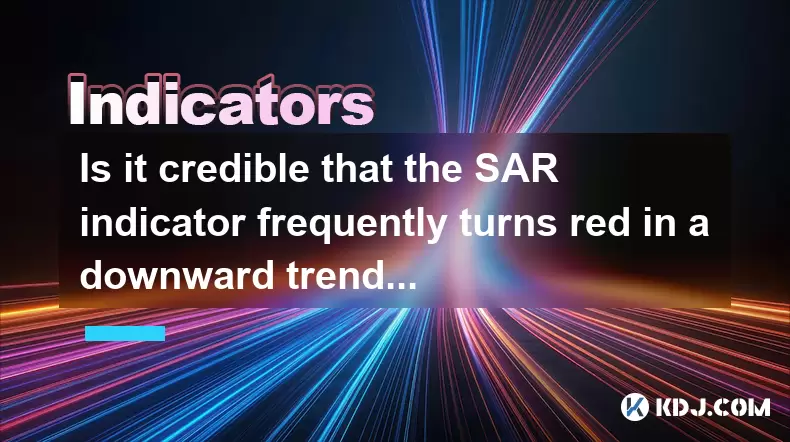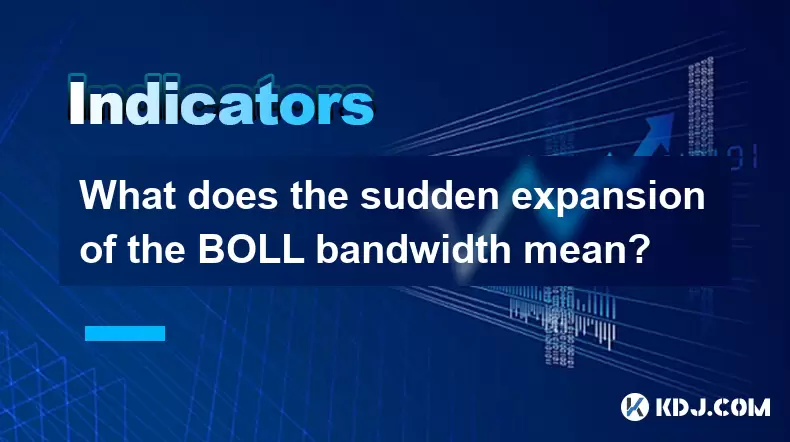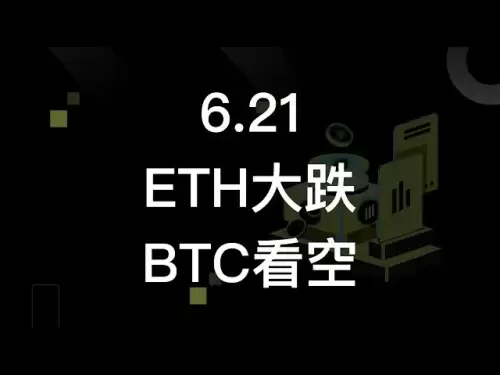-
 Bitcoin
Bitcoin $103,428.7767
-0.86% -
 Ethereum
Ethereum $2,416.9146
-3.27% -
 Tether USDt
Tether USDt $1.0001
-0.02% -
 XRP
XRP $2.1157
-1.12% -
 BNB
BNB $635.7340
-1.57% -
 Solana
Solana $139.8646
-2.67% -
 USDC
USDC $0.9998
0.00% -
 TRON
TRON $0.2725
-0.21% -
 Dogecoin
Dogecoin $0.1596
-4.49% -
 Cardano
Cardano $0.5745
-1.96% -
 Hyperliquid
Hyperliquid $33.8908
-5.41% -
 Bitcoin Cash
Bitcoin Cash $470.3492
-2.63% -
 Sui
Sui $2.6261
-5.34% -
 Chainlink
Chainlink $12.4438
-3.64% -
 UNUS SED LEO
UNUS SED LEO $8.9259
0.46% -
 Stellar
Stellar $0.2411
-2.37% -
 Avalanche
Avalanche $17.1020
-4.26% -
 Toncoin
Toncoin $2.9178
-2.49% -
 Shiba Inu
Shiba Inu $0.0...01113
-3.99% -
 Litecoin
Litecoin $82.5756
-1.67% -
 Hedera
Hedera $0.1426
-2.84% -
 Monero
Monero $311.3851
-0.57% -
 Ethena USDe
Ethena USDe $1.0006
0.00% -
 Polkadot
Polkadot $3.3975
-2.58% -
 Dai
Dai $1.0000
0.01% -
 Bitget Token
Bitget Token $4.2798
-0.36% -
 Uniswap
Uniswap $6.7902
-10.70% -
 Pepe
Pepe $0.0...09588
-4.43% -
 Pi
Pi $0.5308
-2.51% -
 Aave
Aave $244.1989
-4.93%
How to filter false signals when the SAR indicator frequently flips?
The SAR indicator helps spot crypto trend reversals but can flip frequently in volatile or sideways markets, leading to false signals that traders should filter using tools like moving averages, RSI, and price action.
Jun 21, 2025 at 08:43 pm

Understanding the SAR Indicator and Its Behavior
The SAR (Stop and Reverse) indicator is a popular technical analysis tool used in cryptocurrency trading to identify potential reversals in price movement. It appears as a series of dots placed either above or below the price chart, signaling bullish or bearish trends. When the dots are below the price, it indicates an uptrend; when they are above, it suggests a downtrend.
However, during volatile market conditions — especially in crypto markets — the SAR can flip frequently, generating multiple signals that may not result in actual trend changes. These false signals can mislead traders into making premature entries or exits, which could lead to losses. Therefore, understanding how the SAR behaves under different volatility levels and timeframes is essential for filtering out unreliable flips.
Identifying Market Conditions That Cause False Signals
One major reason for frequent flipping of the SAR is market consolidation or sideways movement. During such phases, prices oscillate within a narrow range without forming a clear directional bias. In these environments, the SAR keeps switching sides, creating what’s often referred to as the “whipsaw” effect.
- High volatility can also cause rapid SAR flips, especially during news events or sudden shifts in investor sentiment.
- Lower timeframes like 5-minute or 15-minute charts are more prone to erratic SAR behavior due to increased noise in price data.
- Illiquid markets or low-volume assets in crypto can exaggerate SAR sensitivity, leading to false reversal signs.
Recognizing these conditions helps traders avoid acting on misleading signals and focus only on setups that align with broader market dynamics.
Combining SAR With Other Indicators for Signal Validation
To filter out false SAR signals, traders should use additional tools that confirm the strength and direction of the trend. Here are some effective combinations:
- Use Moving Averages: The 20-period Exponential Moving Average (EMA) can act as a trend filter. Only take SAR signals that align with the EMA direction — for instance, only consider buy signals when price is above the EMA.
- Incorporate RSI (Relative Strength Index): If SAR suggests a bullish reversal but the RSI is above 70, it might indicate overbought conditions, suggesting a possible false signal rather than a genuine uptrend.
- Add Volume Analysis: An increase in volume during a SAR flip supports the validity of the signal. Conversely, if volume remains flat or declines, the reversal is likely false.
- Employ MACD Crossovers: Use MACD line crossing above the signal line as confirmation for bullish SAR flips and vice versa for bearish ones.
By combining SAR with these indicators, traders can significantly reduce the number of false signals and improve decision-making accuracy.
Using Price Action to Confirm SAR Reversals
Price action provides visual cues that can help validate SAR signals. Instead of relying solely on the indicator, observe how price reacts at key support/resistance levels or around candlestick patterns.
- Look for bullish engulfing candles or hammer patterns after a SAR dot moves below the price to confirm a potential reversal.
- Watch for strong rejection bars near previous resistance zones when SAR flips from above to below price.
- Avoid taking trades based on SAR flips that occur during inside bars, small-bodied candles, or low momentum periods.
Traders should wait for at least one or two candles to close beyond the SAR level before considering the reversal valid. This delay helps eliminate premature signals and increases the probability of successful trades.
Adjusting SAR Settings Based on Market Context
The default settings of the SAR — typically set at an acceleration factor of 0.02 and maximum of 0.2 — may not be suitable for all market conditions. Adjusting these values can reduce false flips and make the indicator more adaptive.
- Increase the step value slightly in trending markets to allow SAR to follow the trend more closely.
- Decrease the max value during sideways or choppy conditions to slow down SAR's reversal points and prevent early flips.
- Experiment with different settings across various cryptocurrencies since each asset may respond differently to SAR adjustments.
For example, on BTC/USDT daily charts, setting SAR to step = 0.03 and max = 0.25 may provide smoother signals compared to default values. Always backtest any new settings using historical data before applying them in live trading scenarios.
Frequently Asked Questions
Q1: Can SAR be used alone for trading decisions in crypto markets?
While SAR is useful for identifying reversals, relying solely on it can lead to numerous false signals, especially in highly volatile or sideways crypto markets. It is best used alongside other indicators and price action analysis.
Q2: Why does SAR generate more false signals on lower timeframes?
Lower timeframes contain more noise and short-term fluctuations, causing SAR to react quickly and flip frequently. This makes it less reliable unless filtered with higher timeframe context or additional validation tools.
Q3: How do I know if a SAR flip is genuine or a whipsaw?
A genuine SAR flip usually coincides with strong volume, clear price action patterns, and confirmation from other indicators like RSI or MACD. Whipsaws tend to occur in low-volume, consolidating phases without supporting evidence.
Q4: Is there a specific SAR setting that works best for Bitcoin or Ethereum?
There is no universal setting. Traders should test different configurations based on the asset and timeframe being traded. For example, faster-moving assets may require slower SAR settings to reduce false flips.
Disclaimer:info@kdj.com
The information provided is not trading advice. kdj.com does not assume any responsibility for any investments made based on the information provided in this article. Cryptocurrencies are highly volatile and it is highly recommended that you invest with caution after thorough research!
If you believe that the content used on this website infringes your copyright, please contact us immediately (info@kdj.com) and we will delete it promptly.
- Bitcoin's Chain Split Drama: Knots, Core, and the BTC Price Rollercoaster
- 2025-06-21 22:25:12
- XRP Ledger Meme Coins: Volume Surges and Emerging Trends
- 2025-06-21 22:45:12
- Coin Price Surges: Smart Money's New Crypto Obsessions
- 2025-06-21 22:45:12
- Cardano, Neo Pepe, and Crypto Presales: What's Hot in the NYC Crypto Scene?
- 2025-06-21 22:25:12
- XRP, Meme Coins, and Wealthy Investors: A New Crypto Order?
- 2025-06-21 23:25:12
- Cardano (ADA) Price Check: Bearish Blues or Bounce Back Incoming?
- 2025-06-21 23:10:13
Related knowledge

Does the sudden contraction of ATR indicate the end of the trend?
Jun 20,2025 at 11:14pm
Understanding ATR and Its Role in Technical AnalysisThe Average True Range (ATR) is a technical indicator used to measure market volatility. Developed by J. Welles Wilder, ATR calculates the average range of price movement over a specified period, typically 14 periods. It does not indicate direction—only volatility. Traders use ATR to gauge how much an ...

Is it invalid if the DMI crosses but the ADX does not expand?
Jun 21,2025 at 09:35am
Understanding the DMI and ADX RelationshipIn technical analysis, the Directional Movement Index (DMI) consists of two lines: +DI (Positive Directional Indicator) and -DI (Negative Directional Indicator). These indicators are used to determine the direction of a trend. When +DI crosses above -DI, it is often interpreted as a bullish signal, while the opp...

How to filter false signals when the SAR indicator frequently flips?
Jun 21,2025 at 08:43pm
Understanding the SAR Indicator and Its BehaviorThe SAR (Stop and Reverse) indicator is a popular technical analysis tool used in cryptocurrency trading to identify potential reversals in price movement. It appears as a series of dots placed either above or below the price chart, signaling bullish or bearish trends. When the dots are below the price, it...

Is the trend continuation when the Williams indicator is oversold but there is no rebound?
Jun 20,2025 at 11:42pm
Understanding the Williams %R IndicatorThe Williams %R indicator, also known as the Williams Percent Range, is a momentum oscillator used in technical analysis to identify overbought and oversold levels in price movements. It typically ranges from 0 to -100, where values above -20 are considered overbought and values below -80 are considered oversold. T...

Is it credible that the SAR indicator frequently turns red in a downward trend?
Jun 22,2025 at 12:07am
What Is a Bitcoin Wallet and Why Do You Need One?A Bitcoin wallet is a digital tool that allows users to store, send, and receive Bitcoin. Unlike traditional wallets that hold physical currency, Bitcoin wallets do not actually store the cryptocurrency itself. Instead, they manage the private keys that grant access to your Bitcoin on the blockchain. Thes...

What does the sudden expansion of the BOLL bandwidth mean?
Jun 21,2025 at 01:49pm
Understanding the BOLL IndicatorThe BOLL (Bollinger Bands) indicator is a widely used technical analysis tool in cryptocurrency trading. It consists of three lines: a simple moving average (SMA) in the center, with upper and lower bands calculated based on standard deviations from that SMA. These bands dynamically adjust to price volatility. When trader...

Does the sudden contraction of ATR indicate the end of the trend?
Jun 20,2025 at 11:14pm
Understanding ATR and Its Role in Technical AnalysisThe Average True Range (ATR) is a technical indicator used to measure market volatility. Developed by J. Welles Wilder, ATR calculates the average range of price movement over a specified period, typically 14 periods. It does not indicate direction—only volatility. Traders use ATR to gauge how much an ...

Is it invalid if the DMI crosses but the ADX does not expand?
Jun 21,2025 at 09:35am
Understanding the DMI and ADX RelationshipIn technical analysis, the Directional Movement Index (DMI) consists of two lines: +DI (Positive Directional Indicator) and -DI (Negative Directional Indicator). These indicators are used to determine the direction of a trend. When +DI crosses above -DI, it is often interpreted as a bullish signal, while the opp...

How to filter false signals when the SAR indicator frequently flips?
Jun 21,2025 at 08:43pm
Understanding the SAR Indicator and Its BehaviorThe SAR (Stop and Reverse) indicator is a popular technical analysis tool used in cryptocurrency trading to identify potential reversals in price movement. It appears as a series of dots placed either above or below the price chart, signaling bullish or bearish trends. When the dots are below the price, it...

Is the trend continuation when the Williams indicator is oversold but there is no rebound?
Jun 20,2025 at 11:42pm
Understanding the Williams %R IndicatorThe Williams %R indicator, also known as the Williams Percent Range, is a momentum oscillator used in technical analysis to identify overbought and oversold levels in price movements. It typically ranges from 0 to -100, where values above -20 are considered overbought and values below -80 are considered oversold. T...

Is it credible that the SAR indicator frequently turns red in a downward trend?
Jun 22,2025 at 12:07am
What Is a Bitcoin Wallet and Why Do You Need One?A Bitcoin wallet is a digital tool that allows users to store, send, and receive Bitcoin. Unlike traditional wallets that hold physical currency, Bitcoin wallets do not actually store the cryptocurrency itself. Instead, they manage the private keys that grant access to your Bitcoin on the blockchain. Thes...

What does the sudden expansion of the BOLL bandwidth mean?
Jun 21,2025 at 01:49pm
Understanding the BOLL IndicatorThe BOLL (Bollinger Bands) indicator is a widely used technical analysis tool in cryptocurrency trading. It consists of three lines: a simple moving average (SMA) in the center, with upper and lower bands calculated based on standard deviations from that SMA. These bands dynamically adjust to price volatility. When trader...
See all articles

























































































